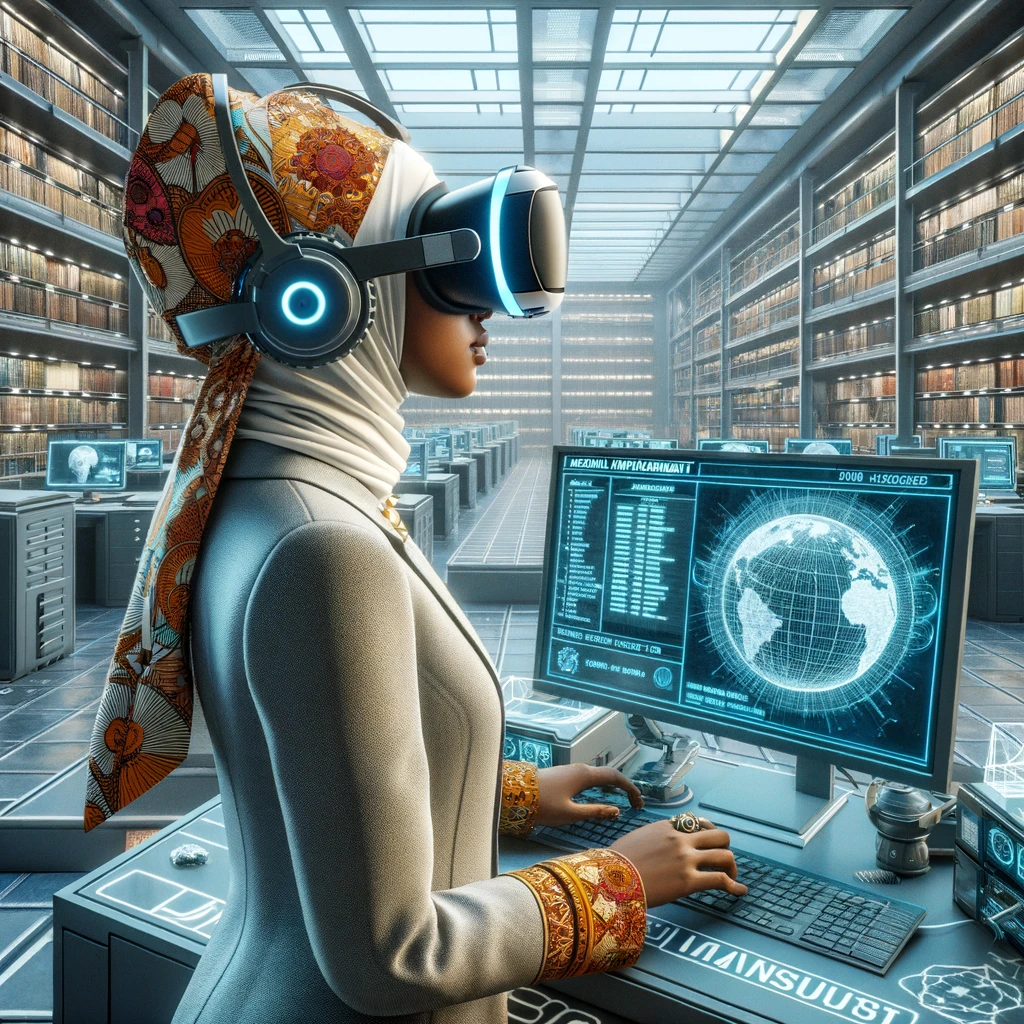
22 Aug Exploring the Intersection of Virtual Reality and Cultural Preservation
I’m thrilled to share some exciting news with you all—I’ve had the incredible opportunity to contribute a chapter to the upcoming book, Trends and Innovations Concerning Library & Information Science. This book is an exploration of the latest trends and innovations in the field of Library and Information Science, focusing on how emerging technologies are reshaping the way we interact with information and cultural heritage.
My Role and Contribution
My chapter, titled “Leveraging Browser-based VR for GLAM Institutions ” delves into the transformative potential of Virtual Reality (VR) and Augmented Reality (AR) within Galleries, Libraries, Archives, and Museums (GLAM) institutions. Drawing on my extensive experience in VR, particularly in the realm of cultural preservation, I explore how browser-based VR platforms can revolutionize access to heritage materials, deepen user engagement, and create meaningful connections with cultural content.
As someone who has worked closely with GLAM institutions, artists, and curators, I’ve seen firsthand both the challenges and opportunities that come with integrating VR and AR into traditional exhibits. My contribution to this book offers a comprehensive look at the practical applications of these technologies, including best practices for designing and developing immersive experiences that are both accessible and impactful.
Collaborating on Another Exciting Chapter
We’ve explored countless VR platforms, and as we begin to focus on promising platforms like Roblox for the future, we realize the importance of documenting what we’ve learned. Our book will be a collection of essays and chapters contributed by members of the VR Exploders, covering a wide range of topics—from specific platform use cases to working with students, the social aspects of VR, hardware considerations, and even the philosophical and ethical implications of virtual reality.
My Contribution to the Project
For this project, I’m contributing a chapter titled Using VR to Increase Access and Engagement in GLAMs: A Comparative Analysis of VR Platforms. This chapter will focus on how Galleries, Libraries, Archives, and Museums (GLAMs) can leverage VR technology to enhance access and engagement with their collections. Drawing on my work with GLAMs through my non-profit organization, Legacy Builders & Empowerment Inc., I will share strategies and case studies on the successful implementation of VR projects.
What Readers Can Expect
The chapter will provide a comparison of various VR platforms, evaluating their features, capabilities, and suitability for heritage preservation and education. As virtual reality continues to evolve, it is essential for information professionals to understand which platforms offer the best tools for creating immersive, engaging, and educational experiences.
Topics covered in the chapter will include creating virtual exhibits, interactive educational programs, and virtual tours that make cultural heritage accessible to a broader audience. I will explore platforms such as Spatial, Second Life, and Frame VR, assessing their strengths and weaknesses in terms of accessibility, user interface, customization options, interactivity, and scalability. Case studies from my work with the Sojourner Truth African Heritage Museum, the California State Railroad Museum, and other projects will illustrate practical applications of these platforms, offering readers a roadmap for integrating VR into their heritage preservation and educational initiatives.
I believe this chapter will provide valuable insights into how VR can enhance educational experiences and preserve cultural heritage, and I’m excited to contribute to this collaborative project.
Why This Matters
The integration of VR and AR in GLAM institutions is not just about adopting the latest technology—it’s about reimagining how we preserve and share our cultural heritage in the digital age. As these technologies become more accessible, they offer unprecedented opportunities to make cultural content available to wider, more diverse audiences. My contributions to these chapters reflect my commitment to advancing these conversations and helping to shape the future of cultural preservation.
I’m incredibly proud of this work and excited to share it with a broader audience. Whether you’re a professional in the field, a technology enthusiast, or simply someone interested in the intersection of culture and innovation, I hope you’ll find my chapters insightful and inspiring.
Stay tuned for more updates as the publication date approaches. I can’t wait for you to read Trends and Innovations Concerning Library & Information Science and explore the many ways VR and AR are transforming the GLAM sector!



